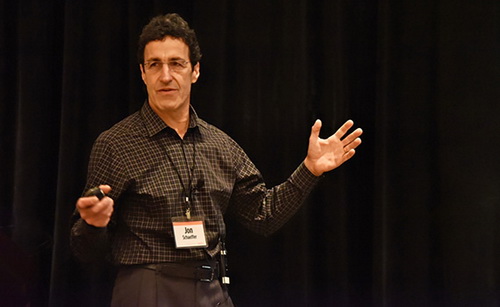



Veterinarian Offers Tips for Controlling Gangrenous Dermatitis in Broilers
GLOBAL - Gangrenous dermatitis (GD) remains a top concern for commercial broiler operations in the United States.[1] In addition to high mortality, the disease results in costly carcass condemnations.
Though much is known about the underlying etiology of the disease, we know very little about the pathogenesis of dermatitis under commercial conditions. In fact, many of the assumptions we’ve made are based largely on anecdotal field observations.
It’s well accepted now that the leading causes of GD are Clostridium septicum and C. perfringens, but multiple other factors appear to be involved.
In a USDA study based on investigation of a GD outbreak among 34-day-old broilers on a commercial broiler farm in Delaware, both C. septicum and C. perfringens genomic sequences were identified by polymerase chain reaction (PCR) testing in bacterial cultures from GD-affected broilers.[2]
However, the investigators also found that sera from GD-affected chickens as well as clinically healthy birds from the same houses all showed high antibody titers against pathogens such as Eimeria, chick anemia virus and infectious bursal disease virus. USDA research has also shown that, compared to GD-free broilers, those with GD have abnormal immune responses.[3]
Many other factors have been blamed for predisposing broilers to a GD field infection, including high stocking density, a low-quality diet, increased litter moisture, bird breed and late coccidial cycling.
GD appears to involve a complex host-pathogen interaction, USDA researchers said, based on their research. Their findings support the possibility that GD outbreaks in broilers may occur “when both C. septicum and C. perfringens are translocated to remote target tissues [such as the skin] as a secondary response to the gut damage caused by local infection.”[4]
GD and ionophores
Another factor linked to GD — and one that’s not completely understood — is the use of ionophores for preventing coccidiosis. There’s fairly convincing evidence they may create an environment in the gut that’s favorable for proliferation of the clostridia associated with GD.[5] When ionophores are removed from feed during growout and substituted with either an effective anticoccidial chemical, which won’t alter intestinal microflora, or a coccidiosis vaccine is used to manage coccidiosis, the incidence of dermatitis typically declines quite rapidly.
The reduction in GD incidence when ionophores are replaced validates the theory that dermatitis originates as an intestinal condition but manifests itself secondarily with the gangrenous skin, severe cellulitis, liver and spleen lesions, and mortality typical of the disease.
Solutions
For producers with a good anticoccidial rotation strategy in place — and when coccidial sensitivity is not an issue — we’ve found that the anticoccidial chemical decoquinate is a good choice for replacing an ionophore in flocks infected with GD.[6] Typically, an increase in dermatitis will not be observed, and we’ve witnessed improvements in performance that may be secondary to improved gut health due to reduced coccidial cycling.
Decoquinate also provides some flexibility since it can be fed continuously throughout growout with no adverse effect on performance, even during warm weather months. In addition, and irrespective of how it is used in a shuttle program, there appears to be no adverse interaction with other anticoccidials.
If there’s concern about its cost or about the development of coccidial resistance due to overuse as part of an annual coccidial rotation program, producers can limit the use of decoquinate to the middle and latter periods of growout, when dermatitis typically occurs.
Jon Schaeffer, DVM, PhD
Director, Poultry Veterinary Services
Zoetis Inc.
[1] Report of the Committee on Transmissible Diseases of Poultry and Other Avian Species, 2014.
[2] Li G, et al. An outbreak of gangrenous dermatitis in commercial broiler chickens. Avian Pathol. 2010 Aug;39(4):247-53.
[3] Li G, et al. Immunopathology and cytokine responses in commercial broiler chickens with gangrenous dermatitis. Avian Pathol. 2010 Aug;39(4):255-64.
[4] Li G, et al. An outbreak of gangrenous dermatitis in commercial broiler chickens. Avian Pathol. 2010 Aug;39(4):247-53.
[5] Ritter, GD. Proposed pathogenesis of gangrenous dermatitis in chickens and attempts at experimental reproduction. Zootechnica. October 1, 2008 21:52.
http://www.zootecnicainternational.com/article-archive/veterinary/232-proposed-pathogenesis-of-gangrenous-dermatitis-in-chickens-and-attempts-at-experimental-reproduction.html Accessed August 13, 2015.
[6] Lee, KW, et al. Effects of coccidiosis control programs on antibody levels against selected pathogens and serum nitric oxide levels in broiler chickens. 2011 J Appl Poult Res. 20:143-152.









